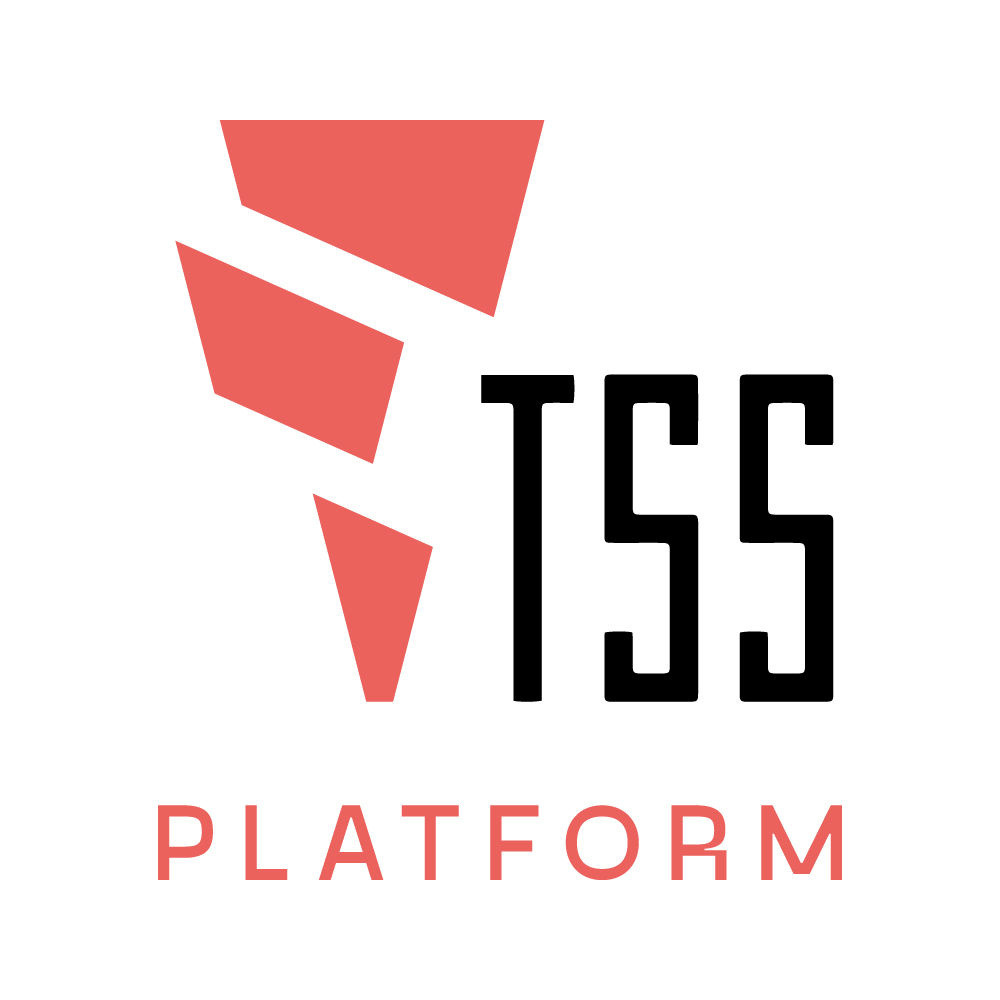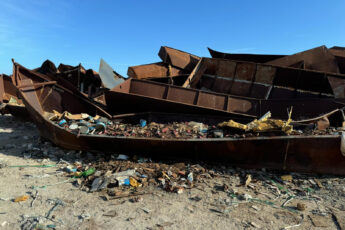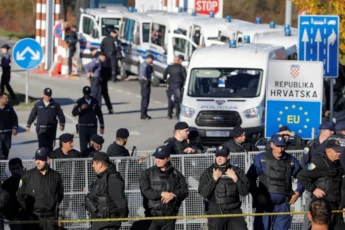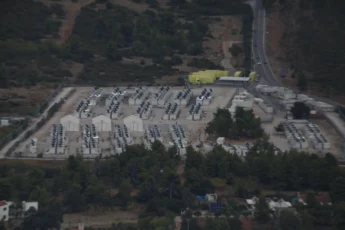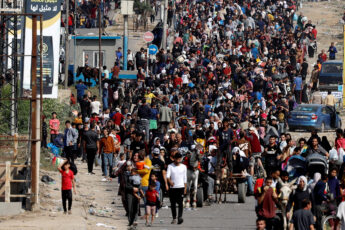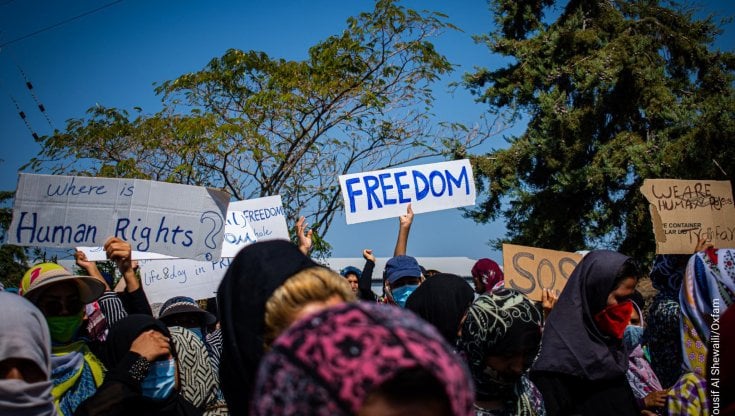
On April 10, the European Parliament approved the Pact on Migration and Asylum, one of the most debated reforms in the recent history of the European Union. After years of negotiations and mutual vetoes, the institutions managed to put aside divisions between the Member States and the EU itself, rallying around an urgency they all agree on: waging war on migrant men and women. With some glittering slogans – speed, efficiency, security, responsibility and solidarity – the EU is about to hand over to the member states a set of rules that will lead to detention centres for migrant men, women and children, sophisticated screening mechanisms, hidden and uncontrolled border zones, immediate rejection of asylum applications and rapid repatriation into the hands of dictators and torturers.
According to the promoters, the Pact is a political response to migrant men and women who use asylum on a massive scale to challenge restrictions on movement, to stay in Europe, and to obtain the documents they need to build new lives. Indeed, in recent years migrants have found new ways to slip through the cracks in response to institutional efforts to keep them out. After the pandemic, arrivals resumed at an unbroken pace. Border centers such as Lampedusa are constantly overcrowded, and new routes have opened from North Africa to Greece, Spain and Italy. National governments and European institutions have so far responded with a policy of planned deaths at sea. After a year of massacres such as the shipwrecks of Cutro and Pylos, dozens of bodies were recovered in the central Mediterranean and off the Spanish coast on the very days that the European Parliament approved the pact; approximately at the same time, the Libyan coastguard, lavishly funded by the Italian government, opened fire on migrants and an NGO trying to rescue them.
In this context, the new rules strengthen and give new coherence to a long-standing system of institutional racism, within which national laws and EU norms have been working together to create conditions of exploitation, detention, racist and patriarchal violence. The new legal framework has two main elements. First, a series of measures aim to restrict asylum and increase the likelihood that migrants will become irregular. Second, the Pact attempts to shift the entire process of managing the movements of migrant men and women to the borders, where they are detained and subjected to the arbitrary decisions of governments. By taking the hotspot approach to a new level, it creates the legal illusion of extraterritoriality, without allowing detained migrants to formally enter EU territory.
The new asylum rules officially sweep away the principle of individual assessment of asylum applications, which national governments like Italy have already largely forsaken. The new agreement endorses fast-track procedures for migrants from “safe countries”. For men and women from countries with a recognition rate of asylum below 20%, the application may be dismissed summarily, without any consideration for the situation of individual circumstances, following a cursory procedure. This sets off a domino of institutional violence: mass rejections will keep the recognition rate low and will increase arbitrary expulsions.
The country of first arrival has six months to evaluate the request and seven days for identification and screening procedures, which now includes even children as young as six. The procedure involves not only fingerprints but also facial biometric recognition. This is the now-infamous dual use of European research in the field of identification and screening, which is now controversial in Gaza but also present in the policy against migrants. It means developing technologies that, when not employed to identify targets to bomb, destroy or kill, are used to register, screen and monitor migrants at Europe’s borders. Europe is thereby investing in the building of a military-industrial-academic complex which intensifies the ongoing war against the freedom of migrants.
Additionally, the new Pact streamlines and accelerates repatriation procedures, ensuring that migrants can also be sent back to transit countries such as Tunisia or Libya. Once again, the European institutions show no hesitation in handing migrants back to the same torturers who open fire on migrants and rescuers. In this respect, the EU is perfectly in line with the UK, choosing to replicate the model with which the latter aspires to deport asylum seekers to Rwanda. Brexit divided the destinies of the two sides of the Channel, but there is no rupture that the war on migrants cannot repair.
In waging this war, Member States are rediscovering the meaning of “solidarity”, with new rules providing for mandatory support when a country faces an undefined “migration pressure”. However, support among states is no longer intended solely as arbitrary relocations. It can also consist of a financial contribution for each migrant who is not relocated, or “logistical support” to countries in charge of managing requests: in other words, “solidarity” can also mean funding border walls, barbed wire, surveillance technologies and infrastructure, and the construction of centers. Despite the opposition from the right, who believes that the new Pact does not go far enough, and despite the limited criticism from the left regarding the consequences on migrants’ living conditions, a cross-party political consensus has gathered around the agreement, finally overcoming the old divisions in the name of stricter asylum policies.
The Pact formalizes a long-standing State policy of externalizing and militarizing borders, which has been intensified by the war. It not only comes shortly after the expansion of the Schengen area to Romania and Bulgaria, broadening Frontex’s reach towards east, but also promotes “global partnerships” with migrant’s countries of origin and transit, consolidating the network of agreements with authoritarian regimes pursued in recent years. Europe has in fact allocated millions to countries like Turkey, Tunisia, Mauritania, Niger, Albania, and most recently Egypt, the most affected country by Israel’s genocidal war against Gaza. It has exchanged the lives and freedom of migrants for the freedom of capitalists to invest in “green transition” mega-projects, enriching them with the slogan “let’s help them at home”.
The approval of the Pact was undoubtedly influenced by the forthcoming European elections, in which leaders from all sides of the political spectrum in Europe are donning their armor, ready to escalate societal and political militarization. Amid the bleak prospects of Third World War and the upheavals heralded by the climate crisis, the Pact actually represents a bold political statement by European Union. Indeed, the destruction and bombing of cities and territories will undoubtedly lead to the creation of millions of refugees. Moreover, the war will set in motion millions of men and women who refuse to be drawn into the logic of the blocs, or who reject any call for resistance with a nostalgic, nationalist, and patriarchal tinge. Similarly, the social, political, and economic crises engulfing many African countries are currently fueling a worryingly fierce return to nationalism, violence, authoritarianism, or civil wars. So, the European response is to further erode asylum rights, while large parts of its surroundings rapidly descend into political turmoil, warfare – such as Sudan, where the civil war has resulted so far in countless deaths and millions of displaced people – and ecological catastrophes.
This attack on political asylum does not mean that Europe is closing hermetically in on itself. Rather, it reflects a desperate bid to manage movements that are now ungovernable, alongside a stark attempt to meet the demands of the labour market. On the one hand, Italy, France, England, and Greece are promoting measures that make it more difficult to obtain the refugee status; on the other, Eastern Europe, ravaged by the Ukrainian war, continues to host hundreds of thousands of Asian migrants, directly recruited by agencies to fill labor shortages in factories. Just two days after the Pact’s adoption, Italy announced a new protocol was announced for the activation of “labor corridors”. A few days ago, Spanish migrant movements and anti-racist groups scored a major victory, compelling the Parliament to debate the popular law for the regularization of 500 undocumented migrants; however, the unexpected openness of the PSOE was probably driven by the pressing need to address structural labor shortages in key sectors with exploitable and cheap labor.
The new European Pact on Migration and Asylum epitomizes the narrowing of spaces, possibilities and perspectives currently defining the politics of Europe at war. This tightening increasingly legitimizes state and border violence, exploitation and hostile and racist bureaucracies. Thus, it is more urgent than ever to create connections that can transform the daily movements of migrants into a visible and powerful struggle against the suffocating environment that shapes the working and living conditions of everyone. In the face of European militarization of society and politics, migrants’ struggles for documents, their daily refusal of exploitation and oppression, and the challenges that men and women pose at European borders, echoes a claim for peace and freedom for all. We are committed to amplifying this call loudly, ensuring it resonates above the clamor of war.
